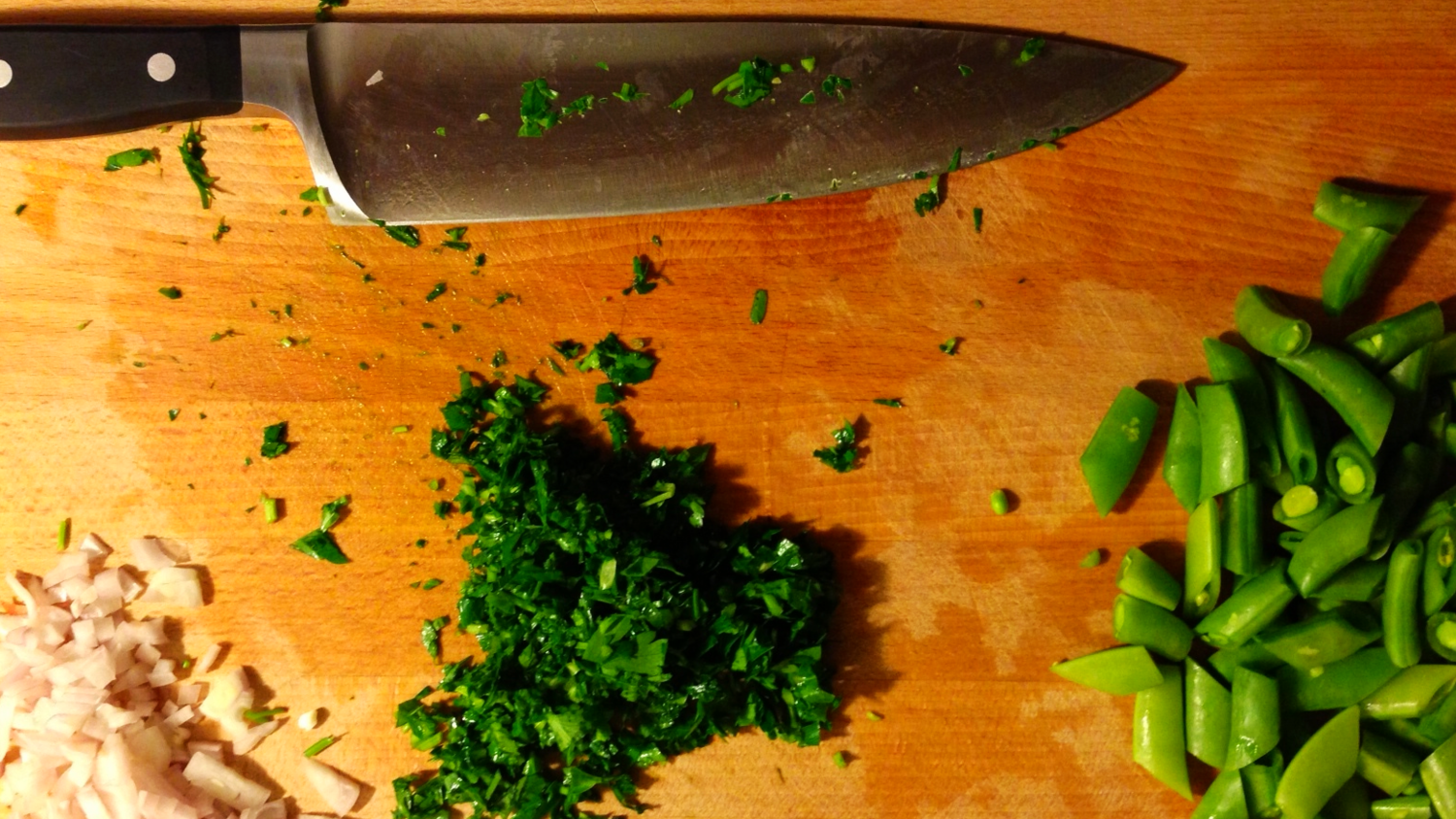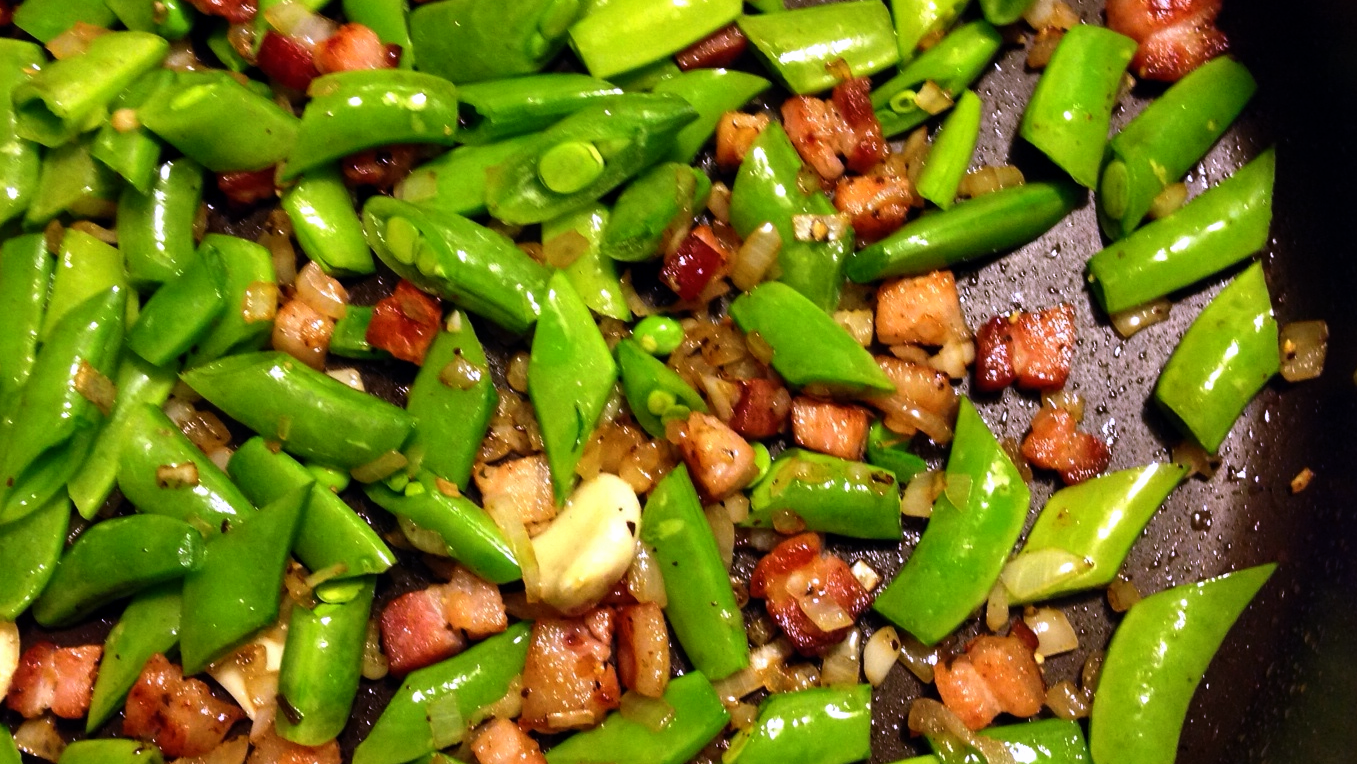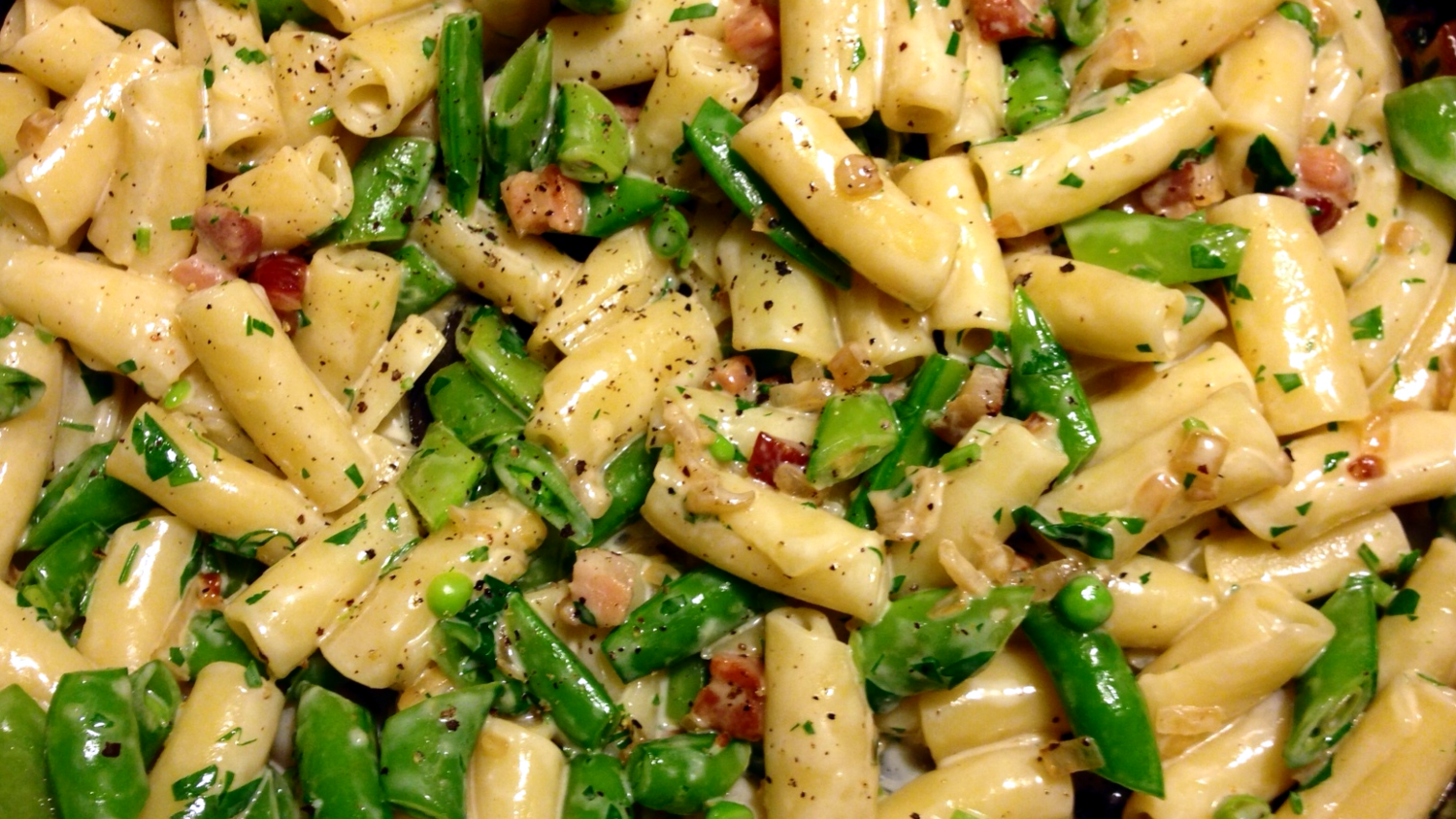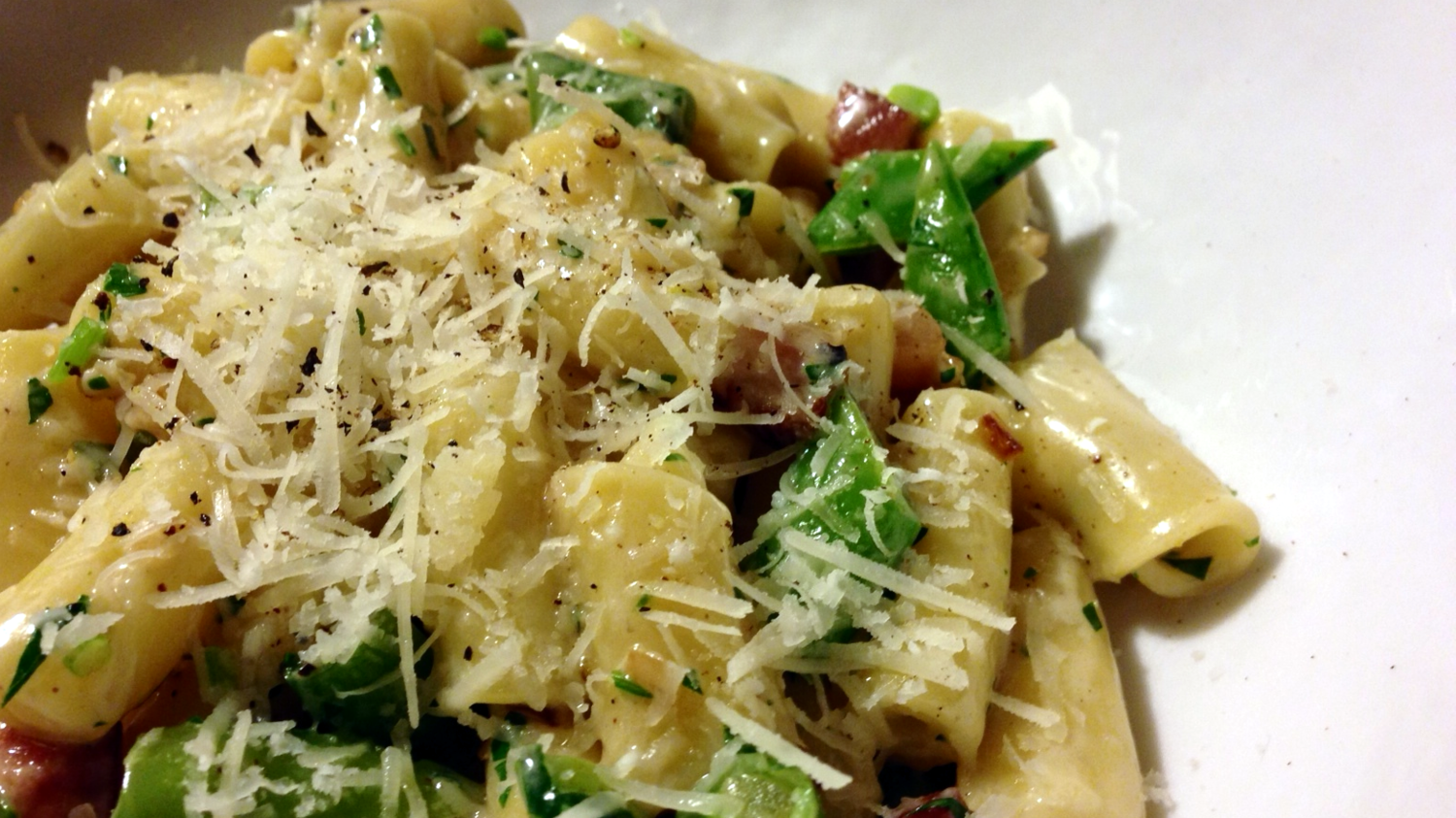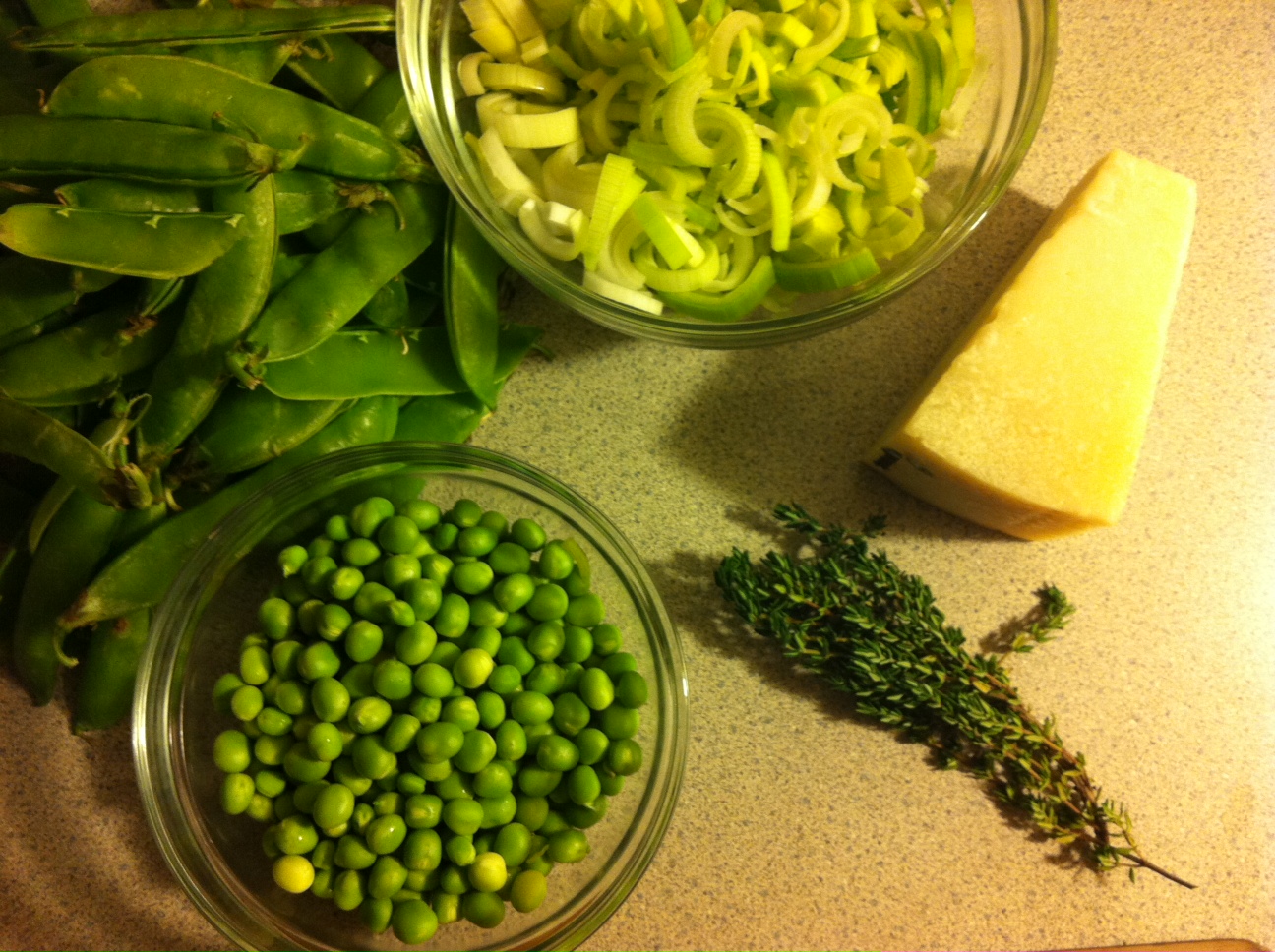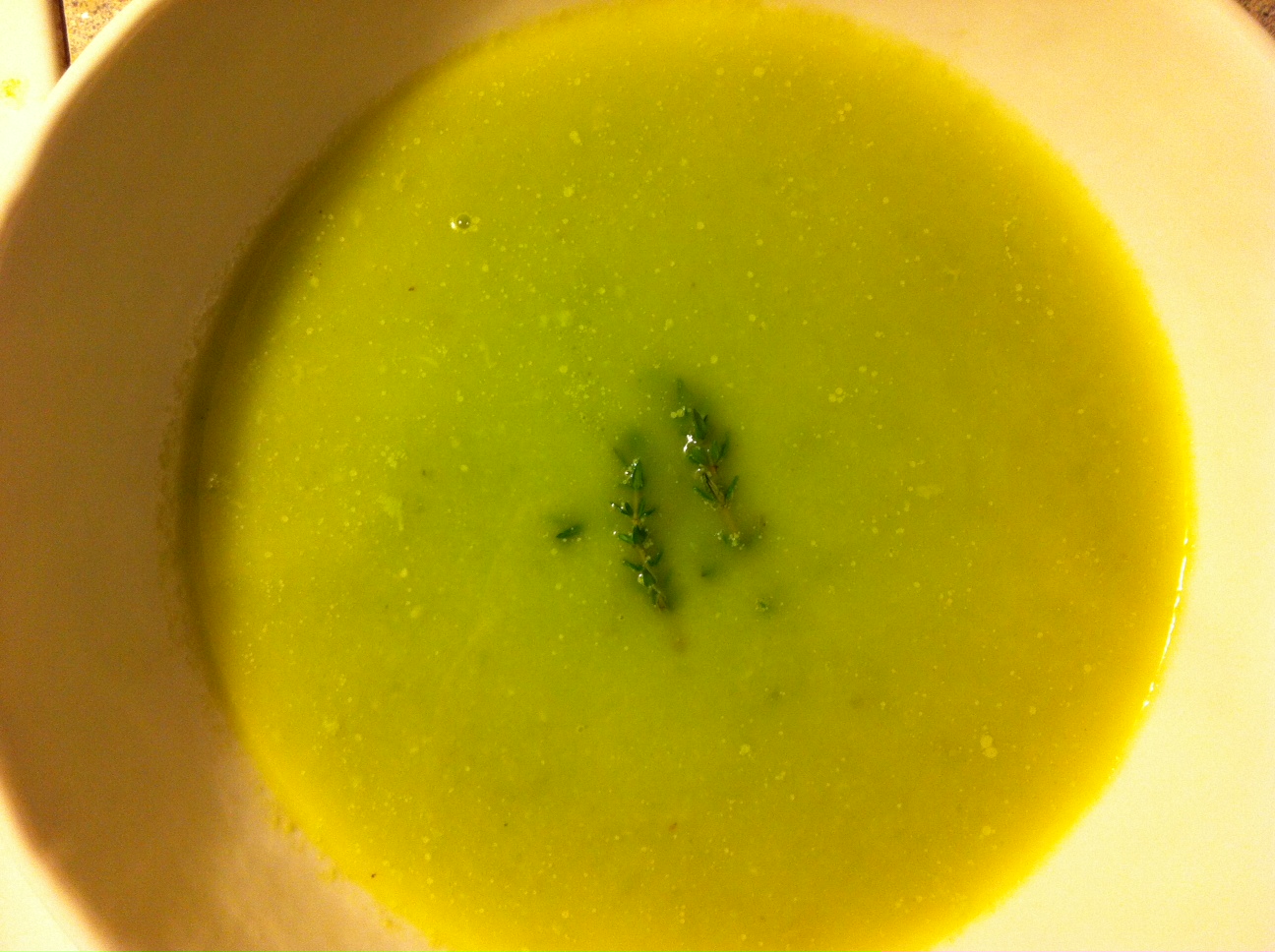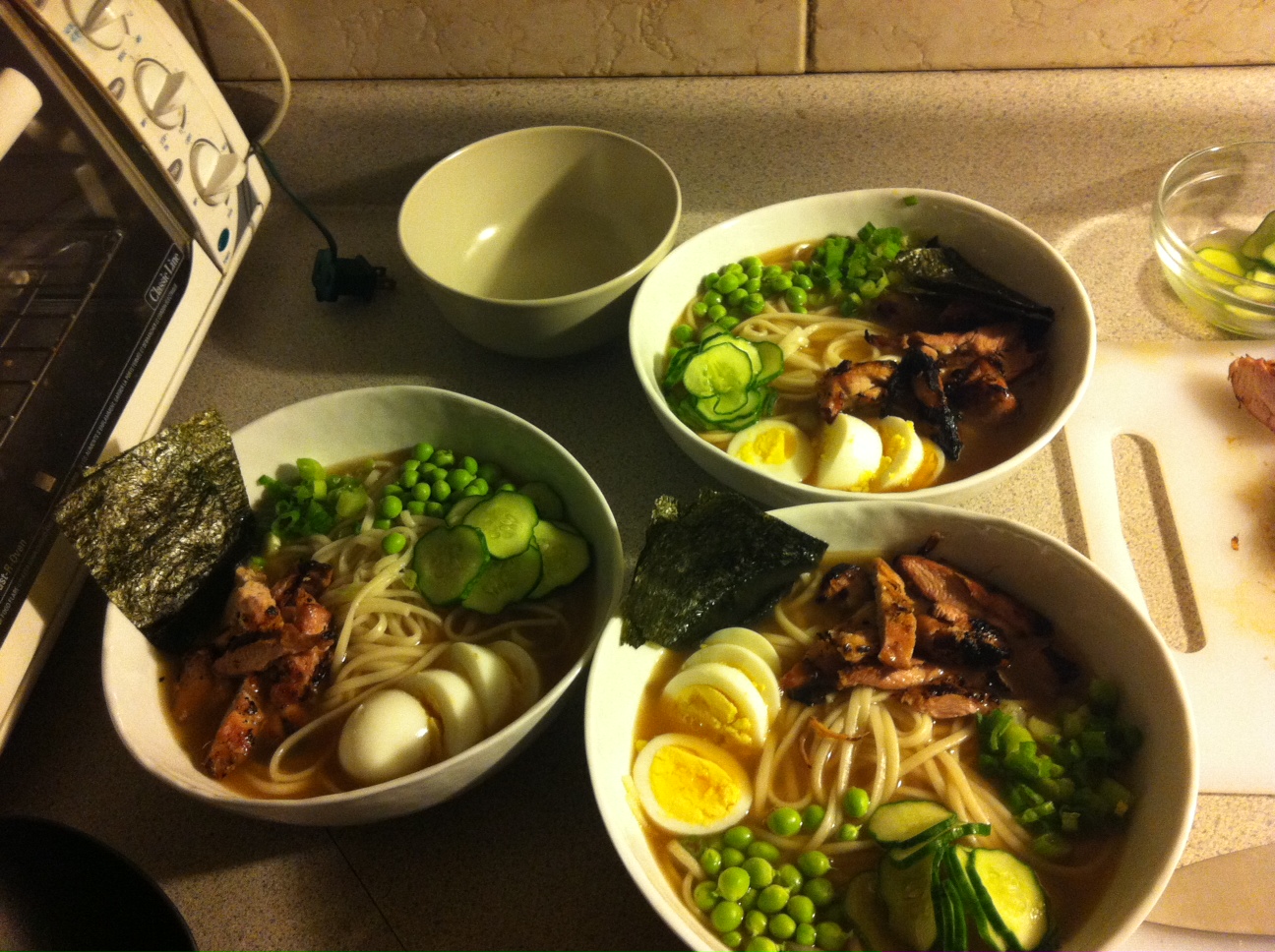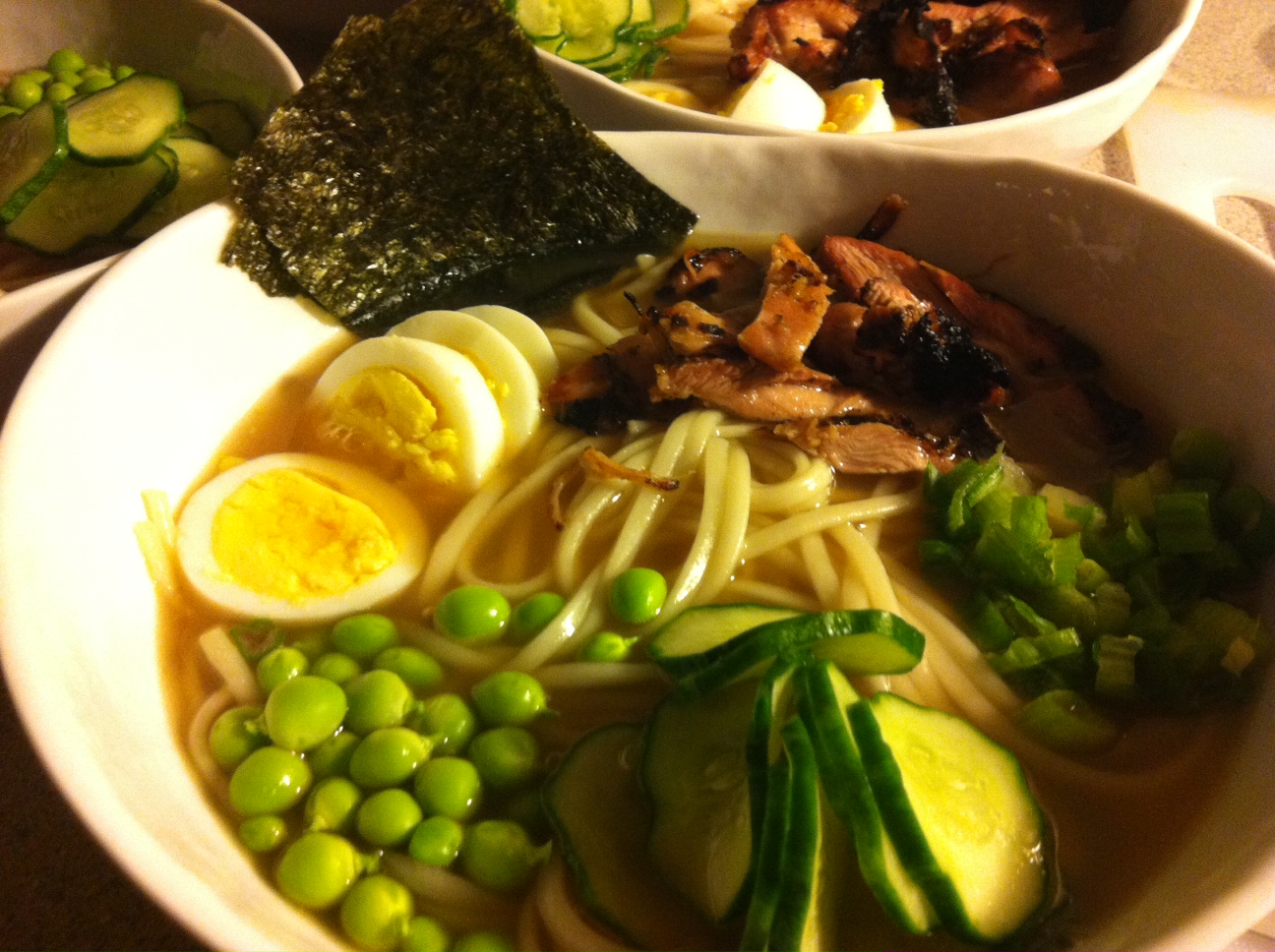Cavatelli with bacon, cream and snap peas
A guilty pleasure for a cold night.
Ingredients
1 lb. cavatelli or other tube pasta
3/4 lb snap peas, ends removed and cut diagonally into 1-inch pieces
1 garlic clove, minced
1 shallot, minced
2-3 strips thick-cut bacon, cubed
Handful of parsley, minced
1 cup grated parmesan cheese
3/4 cup light or heavy cream
Lots of pepper to taste
How to
Bring a large pot of well-salted water to boil. The pasta should come out of the water just as you're completing assembly of the sauce, so begin browning the bacon about 5 minutes before you add the pasta to the water. (Reserve a little pasta water for thinning the sauce, just in case. You probably won't need it but better safe than sorry.)
Brown the bacon in a large skillet. When the bacon has started to crisp up add the shallots and cook for another 2-3 minutes. Next add the peas; stir to coat them with fat and cook for no more than another 2-3 minutes. The peas should darken and maybe even brown in a few spots but you don't want them to lose their crunch. Stir in the garlic for 30 seconds, then the cream.
At this point the pasta should be out of the pot and into a colander.
Allow the cream to reach a simmer, then throw in half the cheese, half the parsley, and all of the pasta. Stir everything together and allow to simmer for a minute or two, or until the sauce is at an ideal consistently. Serve immediately topped with the rest of the parsley and parmesan and a few healthy turns of black pepper.
Fresh pea soup
Sunday night after a weekend in Philadelphia (read: Dalessandro's) requires a sort of detox dinner. Bread, salad, and something fresh to make you feel fully human again. Enter fresh peas.
The gold standard for me is a bowl of pea soup I had at Mercer Kitchen a year ago. It was perfectly smooth, vibrantly green, and tasted like ten thousand peas had be juiced and reduced to a single bowl. The key here is not to skimp on the peas -- they're delicate and so you need a lot of them to get that really intense spring flavor.
Ingredients
2 cups leeks, sliced
3 cups fresh peas, shelled
3 tbsp butter
5 cups water
Fresh herbs for garnish (thyme, mint, tarragon, chervil or chives all work)
How to
Melt the butter in a saucepan and add the leeks, stirring to coat. Allow the leeks to cook for about five minutes, by which time they will have significantly reduced. Add the water and bring to a boil. Toss in the peas and allow them to simmer for no more than five minutes. Remove them from the heat and allow to cool to a reasonable temperature, and then puree in batches until smooth. Garnish with herbs and parmesan.
Udon, grilled chicken, peas, quick pickles, egg, scallions
Sometimes I get ideas. Often they aren't very good ideas, but as a matter of principle I tend to stubbornly pursue them until they prove to be really, truly bad.
Making my own ramen broth certainly appeared to be one of these bad ideas. It required a trip to the further-than-usual supermarket to track down "meaty pork bones." (I soon triumphantly returned holding aloft a bag containing 5 pounds of pig vertebrae.) It also required turning the oven to 400 degrees in the middle of a heat wave.
But this idea turned out to be a great one. Not only because I have woken every day since to an apartment that still smells of smoky pork goodness, but because the broth itself is mighty fine.
David Chang's Momofuku cookbook is not the sort of thing you'd want to cook from every day. It's one part cookbook, but also one part picture book, one part memoir, and eight parts vanity project. Many of the recipes explicitly make the point that they relate exactly how things are made in Chang's restaurants while also implicitly making the point that you can't cook them because you're not David Chang.
Nevertheless, this broth is great. It is certainly a time-consuming production, but in terms of real work and technical skill it is a breeze, mostly just throwing various meats into a pot and watching to make sure nothing boils over. I will direct you to a literal relating of the recipe here and note only that it requires four pounds of chicken, five pounds of the aforementioned meaty pork bones, a pound of pork belly, a few strips of seaweed and a handful of vegetables.
Ruth the cat came over to help me and Anna consume the broth. Usually she just eats milk for dinner but on special nights we serve her ramen.
A few notes on the other accoutrements:
Chicken was done quickly on high heat on the grill after an hour or so marinating in a combination of ginger, garlic, canola oil, soy sauce and fish sauce. Hard boiled eggs were, well, boiled. Fresh peas, which are perfectly in season right now, required no work other than shelling and were sweet as could be when thrown into the bowl raw. Scallions were sliced and tossed in.
Quick pickles were also from Chang, and are simple enough: Slice the cucumbers thin. Toss with one part salt to three parts sugar until well coated, and leave for 15 minutes. If they taste a little too salty or sweet, rinse them in water. Otherwise, they're good to go.
Spring vegetable risotto
Risotto is easy. I'll say it again: Risotto is easy!
Sure, when it's done right and served fresh it tastes creamy and deep and time-intensive. And yes, the dish has a bit of a reputation of being lots of trouble. But these are all illusions.
If you have a couple ingredients lying around that harmonize, a cup or so of short-grained rice (arborio or something like it), and some chicken or vegetable stock, you can cook something that tastes like you stood over a stove for hours and hours. Here's how.
Ingredients
Half an onion, chopped fine
Two cloves garlic, minced
6-8 cups chicken or vegetable stock, warmed
1-2 cups short-grained rice (1 cup will lead to 3 or 4 servings at least, so no need to go overboard)
Vegetables or meat of your choosing (tonight it was chopped snap peas, halved cherry tomatoes, and pancetta browned in a pan)
1/4 cup white wine or white wine vinegar
2 tbsp butter
1 cup parmesan cheese
Chopped herbs for garnish
How to
Heat a couple tablespoons of olive oil in a thick-bottomed deep skillet or pot. Add the onions and cook on high heat until translucent. Stir in the garlic for 30 seconds, until fragrant. Stir in the rice until each grain is coated with oil. When the ends of the grains of rice begin to become translucent (this takes a minute or two , no more) add the white wine or vinegar and let it cook off for a minute or two longer. At this point the edges of the rice should be translucent and the grains should be a little slimy -- not dry, but not soupy either. Add a cup of stock and turn the heat to low. Allow the liquid to cook down, stirring occasionally. When the liquid is almost gone -- the rice should almost be sitting at the upper edge of the liquid -- add a half cup more and keep stirring. Continue this process one half cup at a time for 15 to 20 minutes. Taste the rice periodically. When ready, the grains should be toothsome but clearly cooked through. Stir in the cheese, butter, and vegetables and/or meat and allow to cook for a couple minutes more. Spoon into shallow bowls and serve garnished with the herbs, more cheese, and some fresh pepper.
